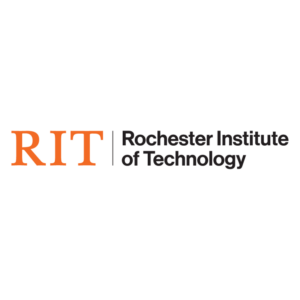Working as a Computer and Information Research Scientist

Computer and Information Research Scientists are at the forefront of technological innovation, tasked with developing new applications for both existing and emerging computing technologies. These professionals blend creativity with expertise to revolutionize how technology serves us, pushing the boundaries of what's possible in the digital realm. With a median salary of around $136,000, the role typically requires at least a Master's degree, reflecting the advanced knowledge and specialized skills needed to excel in this field. This unique blend of innovation, expertise, and reward makes the career both challenging and fulfilling for those passionate about shaping the future of technology.
What Do They Do?
At its core, the role of Computer and Information Research Scientists involves solving complex problems in computing for various applications, from business to science. They work on improving the algorithms that form the basis of computer operations, enhancing data mining techniques, and inventing new computing languages and tools. Their work can lead to significant advancements in artificial intelligence (AI), making computers smarter and more efficient at tasks like pattern recognition and decision-making.
These scientists also play a crucial role in cybersecurity, developing systems and methods to protect against cyber threats. Their research can lead to safer, more secure digital environments for corporations, governments, and individuals.
Educational Pathway
Becoming a Computer and Information Research Scientist typically requires at least a Master's degree in Computer Science or a related field such as Computer Engineering. Some positions, especially those in academia or leading-edge research, may require a Ph.D. The journey begins with a strong foundation in mathematics and programming through a Bachelor's degree, followed by specialized study and research at the graduate level. During this time, students dive into advanced topics, including algorithms, software development, machine learning, and data structures.
Skills and Qualities
Beyond formal education, several key skills and qualities are crucial for success in this field:
- Analytical Skills: The ability to analyze complex problems and devise efficient and effective solutions.
- Creativity: Imagining new ways to use technology requires a creative and innovative mindset.
- Critical Thinking: Evaluating the strengths and weaknesses of possible solutions to make the best decisions.
- Communication: Effectively explaining their findings and why they matter to non-experts, including business leaders and policymakers.
Working Environment
Computer and Information Research Scientists work in various settings, from academic and government research institutions to private sector technology companies. Many enjoy the flexibility of dividing their time between their office and laboratories, where they can conduct experiments or work on developing new software.
Collaboration is a big part of the job, both with other computer scientists and professionals in related fields. For example, working on a healthcare IT project might involve collaboration with doctors, health policymakers, and data analysts.
Computer and Information Research Scientists Tools
Computer and Information Research Scientists delve deep into the realms of computing to innovate and solve complex problems, pushing the boundaries of what technology can achieve. To stay at the forefront of technological advancement, they utilize a variety of cutting-edge tools and technologies. Here’s a simplified overview of some of the latest tools these scientists might use in their groundbreaking work:
Programming Languages and Frameworks
- Python: Widely regarded for its simplicity and power, Python is a favorite for tasks ranging from data analysis to machine learning and artificial intelligence (AI) development.
- R: Specifically designed for statistical computing and graphics, R is invaluable for data analysis, visualization, and developing statistical software.
- TensorFlow and PyTorch: These are open-source machine learning libraries used for numerical computation and deep learning projects, helping scientists develop and train AI models.
Data Analysis and Visualization Tools
- Tableau: This tool allows researchers to create interactive and shareable dashboards that vividly illustrate data trends and insights.
- Power BI: A business analytics tool by Microsoft that enables users to visualize data and share insights across an organization or embed them in an app or website.
Cloud Computing Platforms
- AWS (Amazon Web Services): Offers a broad set of global cloud-based products including computing, storage, databases, analytics, and machine learning resources.
- Microsoft Azure: A cloud computing service for building, testing, deploying, and managing applications and services through Microsoft-managed data centers.
Development Environments and Tools
- Jupyter Notebook: An open-source web application that allows the creation and sharing of documents containing live code, equations, visualizations, and narrative text.
- GitHub: A platform for version control and collaboration that allows developers to more efficiently manage and share their code projects.
Artificial Intelligence and Machine Learning
- OpenAI Gym: A toolkit for developing and comparing reinforcement learning algorithms, providing a simple and accessible interface to a variety of simulated environments.
- Scikit-learn: A machine learning library for Python, designed to interoperate with the Python numerical and scientific libraries NumPy and SciPy.
Quantum Computing
- Qiskit: An open-source quantum computing software development framework that enables researchers to write quantum algorithms using Python.
- Microsoft Quantum Development Kit: Includes the Q# programming language and simulators and resources to start writing quantum computing algorithms and experiments.
Cybersecurity Tools
- Wireshark: A network protocol analyzer that lets researchers capture and interactively browse the traffic running on a computer network.
- Kali Linux: A Debian-derived Linux distribution designed for digital forensics and penetration testing, equipped with hundreds of tools for various information security tasks.
In their work, Computer and Information Research Scientists combine these tools with their expertise in computing theories and complex algorithms to explore uncharted territories of technology. From enhancing cybersecurity measures to developing new AI capabilities, the tools they use are integral to their research and discoveries that could define the future of technology.
The Impact of Their Work
The impact of a Computer and Information Research Scientist's work can be profound, affecting almost every aspect of modern life. Innovations in AI and machine learning can lead to more accurate medical diagnoses, improved educational tools, and smarter, more efficient manufacturing processes. Advances in cybersecurity protect against identity theft, data breaches, and other digital threats.
Future Prospects
The demand for Computer and Information Research Scientists is expected to grow significantly, driven by an increasing need for new and better technology across all sectors of the economy. As businesses and governments collect and rely on massive amounts of data, the expertise of these scientists will be crucial in managing, analyzing, and securing this information.
In conclusion, being a Computer and Information Research Scientist means being at the forefront of technological innovation. It's a role for those who are not just passionate about technology but who are also driven to discover and create new ways to advance it. Through their work, these scientists have the power to shape the future, making our digital and physical worlds safer, more efficient, and more interconnected. It's a challenging and demanding role, but for many, the chance to be a pioneer in the digital age is a rewarding and exciting career path.Top Ranked Online Masters In Computer Science Schools
Stanford University
Stanford, CA
Median Salary: $236,118
Private Nonprofit, Size: Medium
University of Illinois Urbana-Champaign
Champaign, IL
Median Salary: $209,146
Public, Size: Large
University of Southern California
Los Angeles, CA
Median Salary: $184,756
Private Nonprofit, Size: Large
Boston University
Boston, MA
Median Salary: $156,739
Private Nonprofit, Size: Large
Rochester Institute of Technology
Rochester, NY
Median Salary: $149,789
Private Nonprofit, Size: Medium
Nova Southeastern University
Fort Lauderdale, FL
Median Salary: $123,513
Private Nonprofit, Size: Medium
University of Colorado Boulder
Boulder, CO
Median Salary: $121,203
Public, Size: Large
Arizona State University
Tempe, AZ
Median Salary: $120,456
Public, Size: Large
Georgia Institute of Technology
Atlanta, GA
Median Salary: $119,795
Public, Size: Large
Illinois Institute of Technology
Chicago, IL
Median Salary: $116,063
Private Nonprofit, Size: Medium
Drexel University
Philadelphia, PA
Median Salary: $111,901
Private Nonprofit, Size: Medium
University of Illinois Springfield
Springfield, IL
Median Salary: $101,872
Public, Size: Medium












